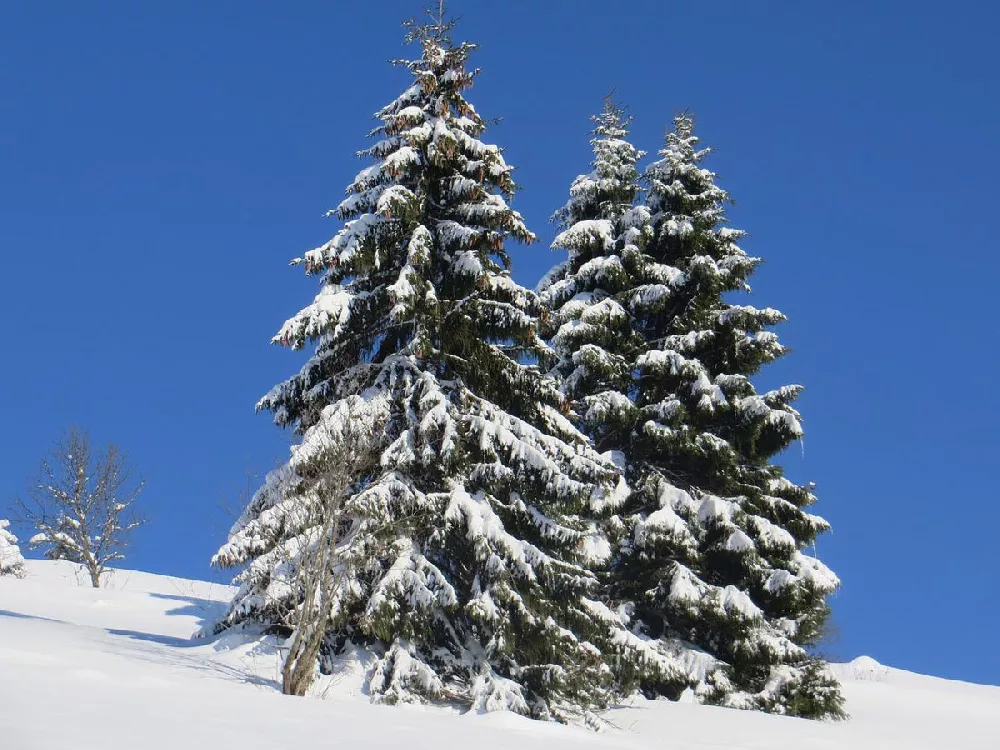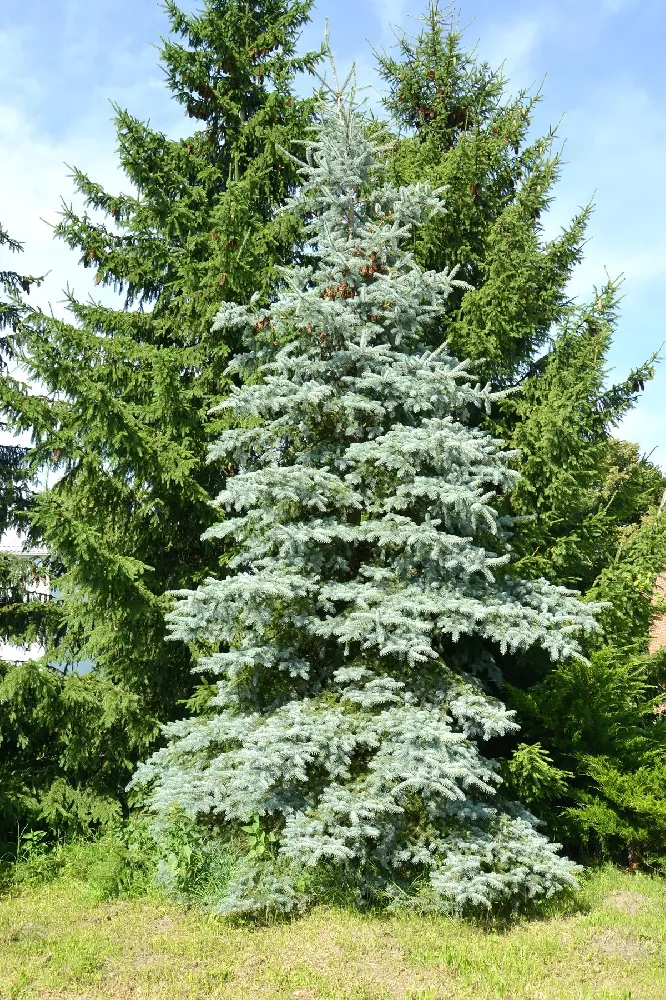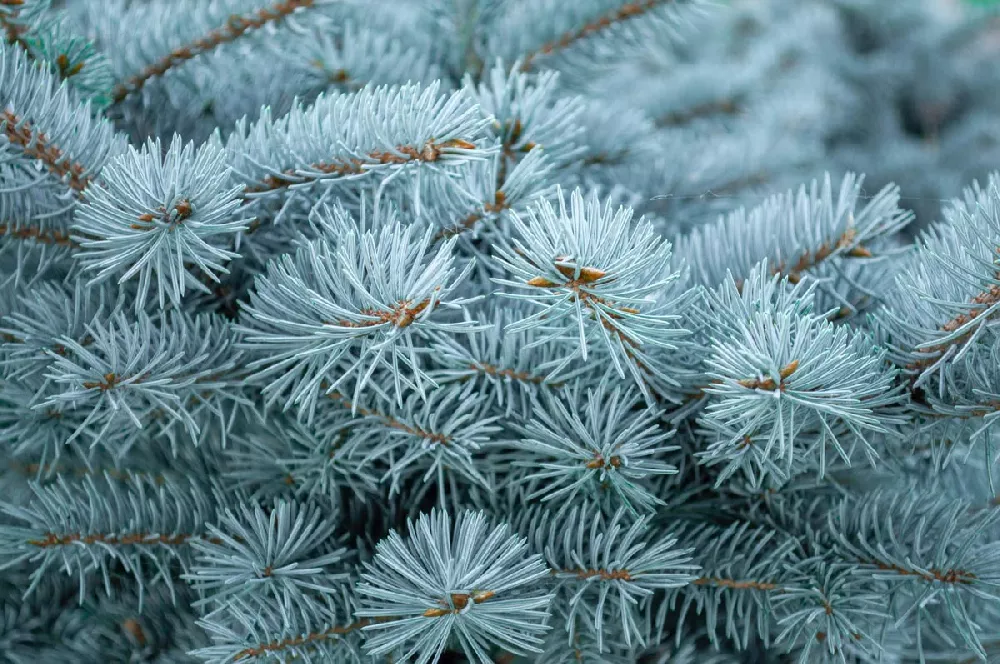- Home >
- Shrubs and Bushes >
- Weeping Hemlock
Weeping Hemlock for Sale - Buying & Growing Guide
Weeping Hemlock, Tsuga canadensis 'Pendula', is a unique cultivar that offers four seasons of interest in the garden or landscape. This stunning evergreen features branches that curve upward then fall gracefully toward the ground, in a display that gives the shrub its name. A mature tree, with a width of 15-30 feet, can look like a green waterfall in your garden and is the perfect backdrop for other plantings in a mixed bed or border. If you wish, you can prune the shrub into a more formal shape, but this isn't necessary. Left on its own, your Weeping Hemlock has much to offer throughout the year in your garden. Here are a few more reasons to consider adding one today:
- It is very cold-hardy and can handle temperatures down to -20 degrees Fahrenheit.
- It provides a nesting habitat for songbirds, as well as seeds during the winter months.
- It is native to North America.
Enter your zip code to find nearby stores that may carry this plant.
Plant Care
Sunlight

Weeping Hemlock thrives in partial to full sun — 4 or more hours of direct light a day.
Watering
Weeping Hemlock needs about an inch of water a week, either from rain or supplemental watering.
Fertilizing

Fertilize in early spring with a product intended for evergreens or landscape trees and shrubs.
Planting and Care
Planting instructions
Site your Weeping Hemlock where it will receive at least 4 hours of sun a day, in soil that drains well. If you are in the southern end of its range, avoid planting it in full sun. Unpot your shrub and tease out any encircling roots, which can girdle the tree and slowly kill it. Dig a hole that’s as deep as the root ball and twice as wide. Place the bush in the hole, spreading out the roots. Holding it upright and steady, fill in around it with topsoil, tamping down as you go to eliminate air pockets. Water thoroughly. Apply a 2- to 3-inch layer of organic mulch such as bark chips around the root zone, but keep them from touching the trunk, which can encourage rot.
Watering and nutrients
When newly planted, water your shrub every few days until established. Weeping Hemlock likes moist, but not wet, soil. Water whenever the soil is dry 2 inches below the surface, or roughly once a week. Fertilize in spring with a balanced, slow-release product that is formulated for evergreens or one that is designed for landscape trees and shrubs.
Pollination
Like other conifers, Weeping Hemlock has cones rather than flowers, and these are the agents of pollination. The trees are monoecious, meaning that a single tree has both male and female reproductive parts. Pollinated cones have seeds that are spread by the wind and offer a winter food source for birds and small animals.
Pruning
Pruning your Weeping Hemlock is optional, and most gardeners leave the tree to assume its natural, graceful shape without extensive trimming. It can, however, be pruned lightly to control shape and size. In addition, you should monitor your shrub for dead, diseased or damaged limbs, which should be trimmed out whenever they are seen.
Pests, diseases and animals
Weeping Hemlock is generally disease- and pest-resistant. Pests that are attracted to hemlocks include Japanese weevils and wooly adelgids, which leave a white mass along the branches. Selective use of insecticides when needed may help control infestations. Diseases of the hemlock include butt rot fungus and root rot fungus. Keep the area around the base of the shrub free of leaf litter and debris, and always water at the base of the trunk to avoid wetting the foliage when possible.
Achieving maximum results
Knowing how to best place your Weeping Hemlock to take advantage of its unique shape and texture is one way to achieve maximum results. It is an excellent specimen planting, placed carefully in a front yard and surrounded by gravel or lower-growing perennials. Because it can handle partial shade, consider using it in a spot that gets less sun, in conjunction with shade-loving plants such as astilbe and Japanese forest grass. It will also stand out when planted in a woodland garden that features dappled sunlight and would look splendid in a rock garden or Asian-inspired garden.
FAQs
How big does Weeping Hemlock get?
Weeping Hemlock has a mature height of 10-15 feet with a potential width of 15-30 feet. You can control the height and width with careful pruning, but make sure you don't damage the naturally graceful shape of this elegant tree through over-pruning.
Where can I grow Weeping Hemlock?
This hardy shrub grows throughout most of the continental U.S., and is hardy in USDA hardiness zones 4-8. That means it can thrive in all but the most northern parts of New England and the Midwest, and the subtropical portions of Florida, Texas and coastal California.
Is Weeping Hemlock poisonous to animals?
No, it's not. Hemlock trees and shrubs are often mistaken for another variety of plant called poison hemlock, Conium maculatum L., which is a member of the carrot family. It is most common in the Southwestern parts of the U.S. and is highly toxic. However, it is not related to Weeping Hemlock, which is not toxic in any way.
Compare Similar Products
You can't add more Product Name - Product size to the cart.
OK








